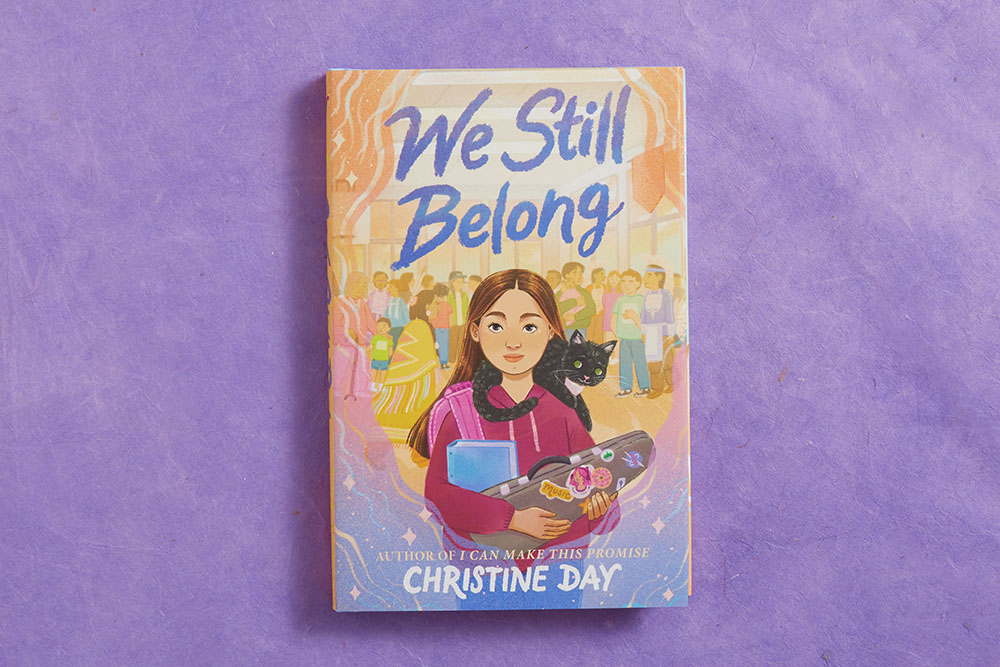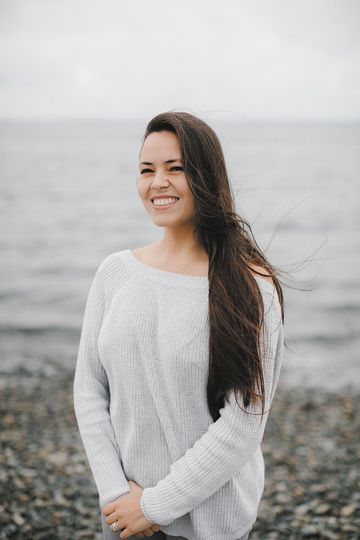
- Details
- By HarperCollins
“What advice do you have for reconnecting Natives?”
This question came to me from a high school student in Tacoma, Washington. A Pueblo girl in Coast Salish territory. I was the guest speaker at her school that day, and she was one of many students—in a crowd of Native and non-Native teens—who had read my debut novel, I Can Make This Promise.
I don’t remember my exact response. I might have said that reconnecting is a lifelong, multifaceted journey for most folks. I might have suggested joining school clubs as a great place to start. I might have encouraged her to read as many Native-authored books as she can, to speak with family members if she is able to, or to attend local powwows and community gatherings.
 Christine Day. Photo by Jessica WoodI’m not sure, though. My memory of my response is hazy, even though I can picture her hopeful face clearly in my mind.
Christine Day. Photo by Jessica WoodI’m not sure, though. My memory of my response is hazy, even though I can picture her hopeful face clearly in my mind.
I’ve had countless interactions like these. Readers of all ages come to me with questions and comments related to who they are, where they’re from, or where they want to be. Once, in an elementary school gymnasium in Maple Falls, Washington, a girl who’d read The Sea in Winter approached me after my presentation. She said she related to the main character, Maisie, because she too loves to dance, and also because she doesn’t know her biological father.
“I haven’t seen my dad in ten years,” she told me. “And I am ten.”
Then she burst into tears, and I remember exactly how I responded this time: I opened my arms to her, and we hugged tightly, fiercely.
With the stories I’ve written, young people feel they can trust me with their vulnerability, as well as their big questions. This trust is—by far—the greatest reward of my writing career.
“Have you ever felt nervous about sharing your writing with people?”
“Have you ever lost a friend?”
“Have you ever considered giving up on a story?”
Yes and yes and yes.
Often, I get to indulge in their silliness, too. During my school presentations, the Q&A sessions have been known to span a wide array of topics:
“Luke Skywalker or Anakin Skywalker?”
Fun fact: I once wrote an essay in college that compared Anakin Skywalker to Heathcliff from Wuthering Heights. My professor gave me an A. So I’ll go with Anakin, even though he’s an antihero.
“Have you ever played Minecraft?”
No, I don’t play Minecraft, but I enjoy other video games.
“Do you have any pets?”
Yes, I have a Chihuahua named Kia. I used to have a cat named Caesar, but he passed away in March 2021. My next book, We Still Belong, is partially dedicated to him, though.
We Still Belong is also dedicated to “the kids who yearn to belong,” which qualifies most of the young readers I’ve met so far. I dedicated this book to them, because they inspire me with their curiosity and compassion. I dedicated it to them, because I believe young people deserve to feel a sense of belonging, no matter who they are, or where they’re from, or what they’re going through in life.
We are all related. We are all connected. And we all belong. More than anything, I hope this is the message kids will take away from my next book.
And I can’t wait to talk with them about it.
Help us tell the stories that could save Native languages and food traditions
At a critical moment for Indian Country, Native News Online is embarking on our most ambitious reporting project yet: "Cultivating Culture," a three-year investigation into two forces shaping Native community survival—food sovereignty and language revitalization.
The devastating impact of COVID-19 accelerated the loss of Native elders and with them, irreplaceable cultural knowledge. Yet across tribal communities, innovative leaders are fighting back, reclaiming traditional food systems and breathing new life into Native languages. These aren't just cultural preservation efforts—they're powerful pathways to community health, healing, and resilience.
Our dedicated reporting team will spend three years documenting these stories through on-the-ground reporting in 18 tribal communities, producing over 200 in-depth stories, 18 podcast episodes, and multimedia content that amplifies Indigenous voices. We'll show policymakers, funders, and allies how cultural restoration directly impacts physical and mental wellness while celebrating successful models of sovereignty and self-determination.
This isn't corporate media parachuting into Indian Country for a quick story. This is sustained, relationship-based journalism by Native reporters who understand these communities. It's "Warrior Journalism"—fearless reporting that serves the 5.5 million readers who depend on us for news that mainstream media often ignores.
We need your help right now. While we've secured partial funding, we're still $450,000 short of our three-year budget. Our immediate goal is $25,000 this month to keep this critical work moving forward—funding reporter salaries, travel to remote communities, photography, and the deep reporting these stories deserve.
Every dollar directly supports Indigenous journalists telling Indigenous stories. Whether it's $5 or $50, your contribution ensures these vital narratives of resilience, innovation, and hope don't disappear into silence.
 The stakes couldn't be higher. Native languages are being lost at an alarming rate. Food insecurity plagues many tribal communities. But solutions are emerging, and these stories need to be told.
The stakes couldn't be higher. Native languages are being lost at an alarming rate. Food insecurity plagues many tribal communities. But solutions are emerging, and these stories need to be told.
Support independent Native journalism. Fund the stories that matter.
Levi Rickert (Potawatomi), Editor & Publisher
